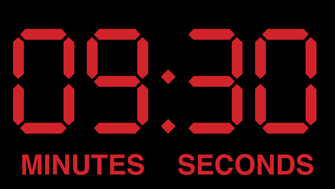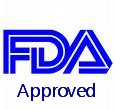A good starting point for controlling your cholesterol is to understand more about cholesterol. Cholesterol is a waxy, fat-like substance that is found in all cells of the body. Your body needs some cholesterol to work correctly and your body is able to make all the cholesterol it needs. Your body uses cholesterol to make hormones, vitamin D, and substances that help you digest foods.
Blood is watery, and cholesterol is fatty. Just like oil and water, the two do not mix. To travel in the bloodstream, cholesterol is carried in small packages called lipoproteins. The small packages are made of fat (lipid) on the inside and proteins on the outside. Two kinds of lipoproteins carry cholesterol throughout your body and it is important to have healthy levels of both:
- Low-density lipoprotein (LDL) cholesterol is sometimes called bad cholesterol. High LDL cholesterol leads to a buildup of cholesterol in arteries. The higher the LDL level in your blood, the greater chance you have of getting heart disease.
- High-density lipoprotein (HDL) cholesterol is sometimes called good cholesterol. HDL carries cholesterol from other parts of your body back to your liver. The liver removes the cholesterol from your body. The higher your HDL cholesterol level, the lower your chance of getting heart disease.
Too much cholesterol in the blood, or high blood cholesterol, can be serious. People with high blood cholesterol have a greater chance of getting heart disease. Many people are unaware that their cholesterol level is too high since it does not cause any symptoms.
Cholesterol can build up in the walls of your arteries (blood vessels that carry blood from the heart to other parts of the body). This buildup of cholesterol is called plaque. Over time, plaque can cause narrowing of the arteries or atherosclerosis, hardening of the arteries.
Special arteries, called coronary arteries, bring blood to the heart. Narrowing of your coronary arteries due to plaque can stop or slow down the flow of blood to your heart. When the arteries narrow, the amount of oxygen-rich blood is decreased. This is called coronary heart disease (CHD). Large plaque areas can lead to chest pain called angina which happens when the heart does not receive enough oxygen-rich blood. Angina is a common symptom of CHD.
Some plaques have a thin covering and can burst (rupture), releasing cholesterol and fat into the bloodstream. The release of cholesterol and fat may cause your blood to clot which can block the flow of blood. This blockage can cause angina or a heart attack.
Lowering your cholesterol level decreases your chance for having a plaque burst which can cause a heart attack. Lowering cholesterol may also slow down, reduce, or even stop plaque from building up. Plaque and resulting health problems can also occur in arteries elsewhere in the body.
Knowing your cholesterol level and tracking your progress on reducing your cholesterol level is easy and inexpensive with a home cholesterol test.
 Every 9 1/2 minutes, someone in the United States is infected with HIV, the virus that causes AIDS. A startling fact presented by the Centers for Disease Control (CDC). CDC arrived at the 9½ minutes figure by dividing the number of minutes in one year by the 56,300 new HIV infections that were estimated for 2006. This result indicates that, on average, one new HIV infection occurs every 9.34 minutes in a year.
Every 9 1/2 minutes, someone in the United States is infected with HIV, the virus that causes AIDS. A startling fact presented by the Centers for Disease Control (CDC). CDC arrived at the 9½ minutes figure by dividing the number of minutes in one year by the 56,300 new HIV infections that were estimated for 2006. This result indicates that, on average, one new HIV infection occurs every 9.34 minutes in a year.

 antibody tests done in doctors offices and health departments. The FDA has tested the blood sample collection process and the laboratory interpreting the results and issued this statement about the FDA approved HIV test:
antibody tests done in doctors offices and health departments. The FDA has tested the blood sample collection process and the laboratory interpreting the results and issued this statement about the FDA approved HIV test:
